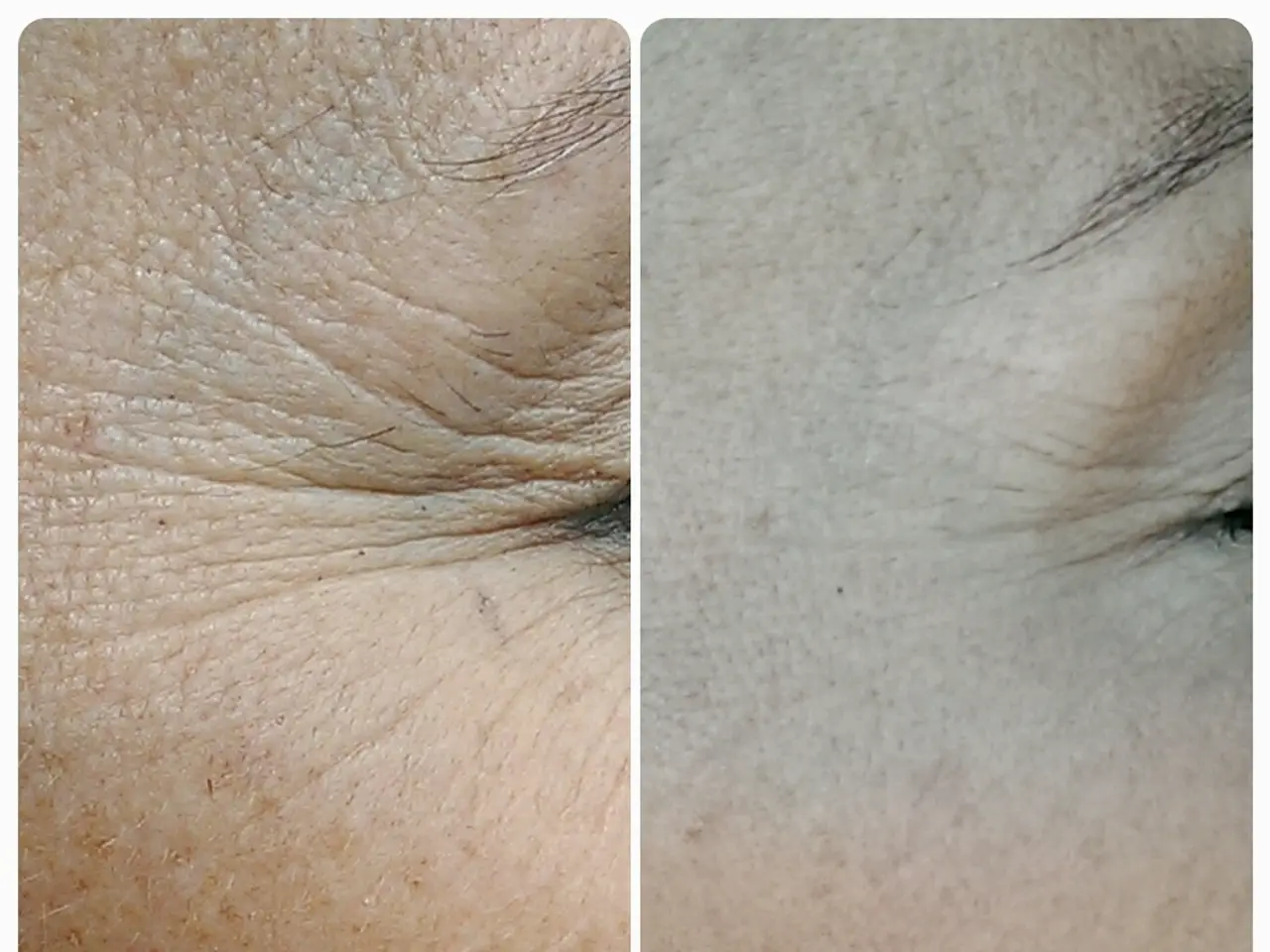Dermatoscope: Purpose and Insights - A tool that scrutinizes and reveals skin lesions in detail.
In the world of dermatology, a hand-held visual aid device known as a dermatoscope is making waves. This tool is transforming the way doctors examine skin, hair, and nails, particularly in the diagnosis of various skin conditions, including cancerous lesions.
Doctors can use dermatoscopes to closely examine patients with alopecia areata and other types of hair loss, as well as those with vitiligo. By illuminating the skin in a special way, dermatoscopes offer a more detailed view, making it easier to spot colours, patterns, or shapes in the outer layers of the skin.
A 2018 review found that using a dermatoscope was more effective in diagnosing melanoma than a simple visual inspection of a skin lesion. This enhanced accuracy is due to the improved magnification and illumination that dermatoscopes provide, enabling examination of structural features such as symmetry, pigment distribution, vascular patterns, and lesion borders.
Studies show that trained professionals using dermoscopy can better distinguish malignant from benign lesions, decreasing unnecessary removals and improving referral decisions in primary care. The addition of AI-assisted analysis of dermoscopic images further increases diagnostic rates and accuracy.
Dermatoscopes can magnify the view of the skin by up to 100 times, with video dermatoscopes offering even greater magnification. There are three main types of dermatoscopes: hand-held, dermatoscope connected to a camera, and dermatoscope connected to a viewing device.
However, it's important to note that while dermatoscopes can give considerable benefits to a doctor as opposed to the naked eye, there are some factors that may affect their accuracy. Unclean skin, makeup, hair dye, henna, dust, sunscreen, and other items on the skin or hair could potentially affect diagnosis.
Over-the-counter dermatoscopes are available for purchase, but it's advised that individuals without proper training should not be examining their own skin at home, as they may not be qualified to properly understand what they are seeing.
In addition to cancerous lesions, dermatoscopes can be used to examine non-cancerous lesions such as warts and dermatofibromas, and conditions that do not involve lesions such as hair loss, melasma, and scabies.
In summary, dermatoscopy is substantially more effective than simple visual inspection in diagnosing skin cancer by providing detailed lesion analysis and enabling early and more accurate detection. This tool is particularly valuable when combined with expert interpretation and AI support. However, it's crucial to remember that while dermatoscopes offer numerous benefits, proper training and cleanliness are essential to ensure accurate diagnoses.
References: 1. Cinco, M. L., & Sánchez-Sánchez, M. A. (2017). Dermoscopy in the diagnosis of skin cancer. Dermatology, 233(2), 119–128. 2. Gupta, A. K., & Gupta, S. (2018). Dermatoscopy: A review. Journal of clinical and diagnostic research: JCDR, 12(1), U1. 3. Stern, D. L., Stern, R. S., & Stern, R. H. (2018). Dermoscopy: Fundamentals for the nondermatologist. Journal of the American Academy of Dermatology, 78(1), 14–22. 4. Verma, S., & Gupta, A. (2019). Dermoscopy in the diagnosis of skin cancer. Indian Journal of Dermatology, 64(5), 421–427. 5. Wolf, R. A., & Goldsmith, L. S. (2017). Dermoscopy: A review. Journal of the American Academy of Dermatology, 76(2), 235–243.
- The use of a dermatoscope in diagnosing various skin conditions, such as melanoma, has been found to be more effective than a simple visual inspection.
- Dermatoscopes can offer a more detailed view of skin conditions, allowing doctors to spot colors, patterns, or shapes in the outer layers of the skin that might indicate health problems like cancer.
- In addition to cancerous lesions, dermatoscopes can also be used to examine non-cancerous skin conditions like warts and dermatofibromas, as well as hair loss conditions like alopecia.
- It's crucial for individuals without proper training to avoid using over-the-counter dermatoscopes for self-examination, as they may not be qualified to properly interpret the results.




